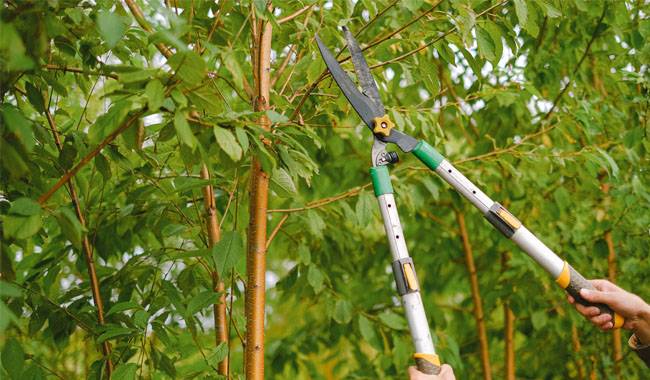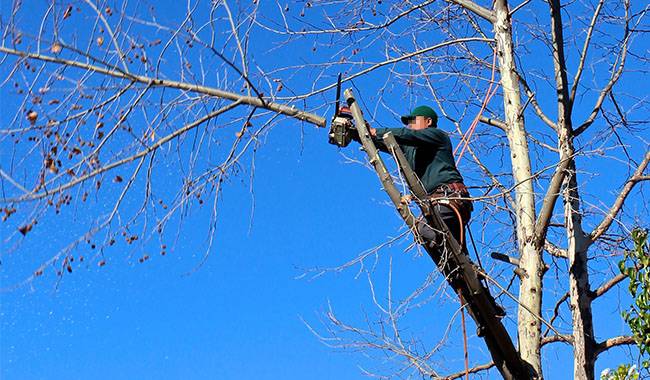
Gardeners just like a children, they take a watering can and pour all the water, necessary and not necessary. They take a hoe, cut all the weeds, and start Pruning fruit trees, leaving the ground bare in the hot sun.
And if the pruning shears in hand is usually a disaster: everything is cut off, both fruit and decoration: inflorescences, shoots that stand out, shoots that do not stand out, but do not like them, wretched, shoots, dry and diseased branches, while there are healthy ones that get under the hot hand.
Obviously, of course, we have plenty of time for quarantine and nowhere to apply energy, but before any work (even before watering!), you have to do some work first. It’s a good idea to know a little about this first.
In this article, we will talk about pruning fruit trees in summer. What, where and when to prune it.
WHY CUT TREES?
There is a difference between tree shaping and sanitary pruning. By shaping and pruning, gardeners are trying to make their lives easier by solving a number of problems.
- Form a theoretically and personally correct view of the tree’s crown.
- Ensure proper fruiting of large fruits.
- Make harvesting and pruning easier.
- Prevent branches from being blown off by the wind or harvested too heavily.
- In some cases to suppress the growth of the tree.
- In rarer cases, to delay flowering.
The tree has its own view on the correctness of the canopy: it needs to conquer the maximum space, get the maximum light and, as a rule, it does not always match the gardener’s behavior.
Even if a wise gardener foresees that an unsuccessfully growing branch may break off and then takes it off, the tree will immediately wake up the sleeping buds around it in protest and grow up with a whole broom.
In other words, tree pruning is an eternal confrontation between the gardener and the tree. And if the shaping process has already begun, it is not advisable to start it. Out of a sense of self-preservation, the tree fights to churn out “tops” – unproductive growth – in a few years after it has stopped shaping.
Of course, one can plant a sapling at will and give it a chance to grow and bear fruit. And it will grow and bear fruit tirelessly.
The old apple trees in the orchard, seemingly overgrown to the point of impossibility, will have such a crop every two years that the branches break – completely unpruned in the sense of any outside intervention. Intervention is needed when the branches have already broken.
Every gardener, therefore, should decide at the beginning of his or her gardening career: should the tree be shaped and pruned, or should it be left to grow?
If you decide to shape trees, you need to be well prepared. As Nikolai Goshe said in the early 1900s and the last century.” The harmful consequences of improper pruning are far greater than the consequences of not pruning.”
Sanitary pruning is relatively simple. Remove branches that are frosted, wilted, broken, or diseased.
WHERE AND WHAT NOT TO CUT
In most parts of the country, the climate is harsh and put it mildly. Not the most conducive to gardening. There is a part of the country which is fewer population. They are also engaged in gardening and have developed their own rules, different from the usual ones.
Therefore, in areas with harsh summers, fruit trees can only be pruned at the beginning of growth and pruned hygienically. The summer is short. After the normal growth of branches, the tree gets proper roots to establish balance.
Once the branches are broken, the balance is upset. But the nutrients are already planned for this branch!
Therefore, the establishment i.e. the pushing out of two young shoots from the upper buds, instead of the cut branches, urgently awakens one or two dormant shoots. That is, the beginning of the growth of young shoots and the setting of fruit buds are shifted to low temperatures.
This is not a particular problem in the middle belt and south of Russia. But for Siberia and the North, it is crucial – the tree will not have time to prepare for winter.
So, if you haven’t had time to break off the spikes (shoots that grow vertically where they shouldn’t) that have started to grow in mid-June, you don’t need to touch them.
Also, the wounds left after pruning need resources to tighten up, release anti-fungal substances, and build up bark rolls. It is better to prepare the plants for a long frost. They won’t be asking for it.
Even in sanitary pruning (branches involved in frost), you should not cut the entire branch at once if there are no leaves growing on it. Very often, the frozen twigs will partially “wake up” later.
Therefore, it is advisable to cut off only the top third and let the rest stand “bare” for a while if it does not wake up by the end of June.
Apricot trees are very sensitive to any pruning. For those who don’t know, there are the most frost-resistant Manchurian apricots in the world, on which the apricots there are grown (varieties or grafting).
It is best not to touch their growth in the summer. Prune only the frost and diseased shoots. For apricots, any wound is a way to infection, infection, and branch death. In non-native climates, it is not a particularly healthy tree.
For all areas – it is best not to start in the summer if the tree has not been shaped before – limit yourself to sanitary pruning.
SUMMER PRUNING CAN BE DONE ANYWHERE
In late winter, when the whole tree is standing bare, you can clearly see how the skeleton branches are arranged, where they are redundant, and where they are missing. You can delete what is superfluous and stimulate the growth of what is missing.
But in summer, nothing can be seen behind the solid bud clump, and the only way to get a sense of what is superfluous here is to examine every branch of the canopy. After a while, you get used to it, and it’s easier to spot what needs to be cut, plucked, or chipped from a distance.
It is even preferable to cut or pluck because if the branch has already reached the state when you have to cut it with scissors, it is already a bit late. Dividers and saws are only good for removing diseased, dry, and damaged branches in the summer.
The best shaping work with trees in summer is timely, as it appears, breaking young spikes: no more than 4inch (10 cm) high, pruning the tops of actively growing shoots, refining and refining the buds of young branches directed to the crown upward tearing of the central conductor.
In other words, shaping with minimal damage and stress to the tree.
Hygienic pruning of branches in summer is particularly significant for stone fruits: winter and spring pruning often leave them bruised and in need of careful treatment. While cutting or sawing dry branches, you should pay attention to the condition of the wood: if you can see a fungal infestation, saw down more healthy wood.
If you have sawed to the trunk and can still see signs of decay, it is time to sow and grow a new tree. However, on an infected tree, you need to make sure that the fruiting bodies of the fungus do not appear, otherwise, there is a risk of infecting the whole garden.
Pruning trees in August, even sanitary pruning, is not advisable due to the presence of the fungus: this is when the fungus begins to actively form spores.
Wounds and injuries to the bark are opening the door to infection at this time. At this time, all trunks and trellis branches should be inspected, cleaned, and bark damage repaired.
Summer shaping pruning is most often used on young seedlings – it is certainly not useful to prune on huge apple or cherry trees. In addition, young seedlings have not yet borne fruit and are not in danger of losing a crop due to less competent action.

ADVANTAGES AND DISADVANTAGES OF SUMMER PRUNING
Hygienic pruning of fruit trees in summer is absolutely necessary, there is nothing to say about it. But with shaping, everything is not so simple.
On the one hand, removing young shoots at the beginning of their growth in summer excludes winter and spring pruning of already relatively thick young shoots. On the other hand, it delays the growing season: time passes when the tree’s sap is redistributed.
By pruning the ends of the growing shoots, strengthens the growth of the lateral branches, slows down the growth of the central branches, and accelerates the onset of fruiting. Only, the tree may not be growing the wrong things in the wrong places according to the intended plan.
It will all have to be uprooted and broken again. Ideally, the unnecessary buds should be pulled out, but this also requires a lot of practice.
Pruning, including summer pruning, forms the canopy the gardener needs, but any pruning needs to be accompanied by competent care: stress and wounds, even small ones, do not add to the health of the tree.
I advise novice gardeners to start forming pruning in winter, which has been studied in detail before, starting with one or two young trees. It is they who have to cut “according to science”, observe and be sure to fix with words and photos.







